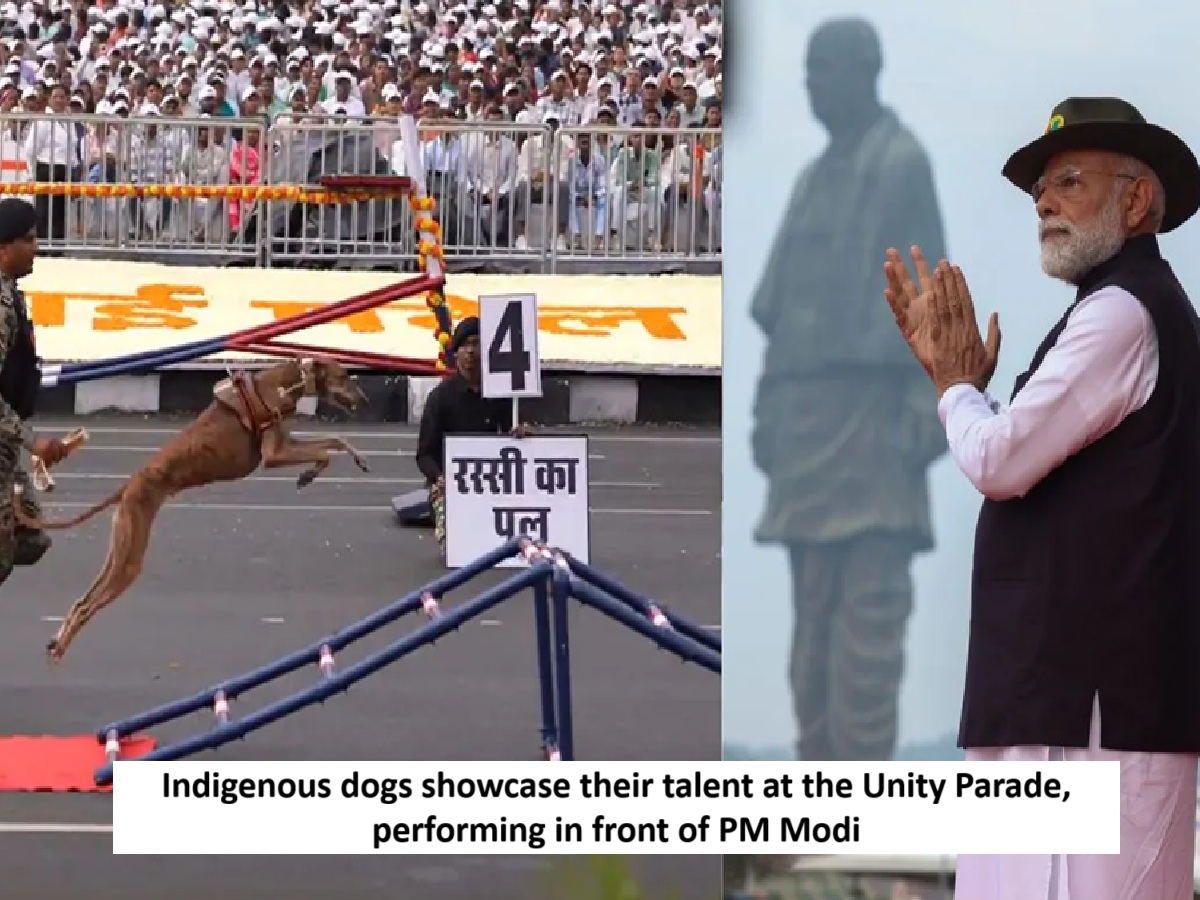
News Topical, Digital Desk : Dogs have always held a special and revered place in India's history, culture, and mythology. Indian dog breeds have been known for their unparalleled courage, loyalty, and efficiency. Their presence, from royal courts to the battlefield, symbolizes the unbreakable bond between humans and animals in India's glorious military and cultural tradition.
PM Modi took the initiative
This historic tradition received a new direction when Prime Minister Narendra Modi visited the Border Security Force's (BSF) National Dog Training Centre (NTCD) in Tekanpur in January 2018. On this occasion, he emphasized the need to promote Indian breeds of dogs in the security forces. His visionary guidance proved to be a significant step towards recognizing, training, and incorporating indigenous breeds into operational roles.
Mentioned in Mann Ki Baat
Further bolstering this vision, the Prime Minister called for the adoption and promotion of Indian dog breeds in his "Mann Ki Baat" address on August 30, 2020. This appeal, imbued with the spirit of "Atmanirbhar Bharat" and "Vocal for Local," generated a strong sense of indigenous pride, self-reliance, and cultural resurgence across the country.
Two breeds included in BSF
Inspired by the Prime Minister's inspiration, the BSF took a historic initiative by inducting two prominent Indian dog breeds—the Rampur Hound and the Mudhol Hound—into the force. The Rampur Hound, originating from the princely state of Rampur in Uttar Pradesh, was developed by the Nawabs for hunting jackals and other large game. This breed is renowned for its speed, endurance, and fearlessness. The Mudhol Hound, native to the Deccan Plateau, has traditionally been used for hunting and security purposes. It was also associated with the Maratha armies. It was later preserved and cultivated by Raja Maloji Rao Ghorpade, who introduced it to the British authorities as the "Caravan Hound." These Indian dog breeds are characterized by high agility, endurance, adaptability, disease resistance, and minimal grooming requirements. These qualities make them particularly effective in India's diverse geographical and climatic regions.
BSF is giving training
The BSF not only trains these dogs at the National Dog Training Centre in Tekanpur, but is also actively breeding them. This initiative has now expanded to subsidiary K9 training centres and field units, leading to a steady increase in the number of Indian-bred dogs. Currently, over 150 Indian-bred dogs are deployed in various strategic and sensitive areas of the country, such as the western and eastern borders, and in anti-Naxal operations. Their impressive performance has given indigenous breeds a strong place in the operational structure of the security forces.
The success of this initiative was demonstrated at the 2024 All India Police Duty Meet (Lucknow), where the BSF's "Riya," a Mudhol Hound, won both the Best Tracker Trade Dog and Dog of the Meet titles. This was the first time an Indian breed achieved this feat, defeating 116 foreign breeds. This is a living testimony to the excellence, discipline, and capabilities of Indian dogs.
Dogs performed at the Unity Parade
Indigenous dogs were on display today at the National Unity Day parade held in Ekta Nagar, Gujarat. The BSF was represented by a marching contingent composed solely of Indian breeds. A special dog display was also presented on the occasion, showcasing tactical skills and operational capabilities. This symbolizes the K9 power of a self-reliant and self-respecting India.
The induction, training, breeding, and deployment of Indian breed dogs in the BSF is a powerful example of India's commitment to self-reliance, indigenous heritage, and national pride. This initiative not only revives India's traditional breeds but also proves that India is marching forward on its path with confidence, strength, and dignity, and Indian dogs are at the forefront of serving the nation.
--Advertisement--

 Share
Share



